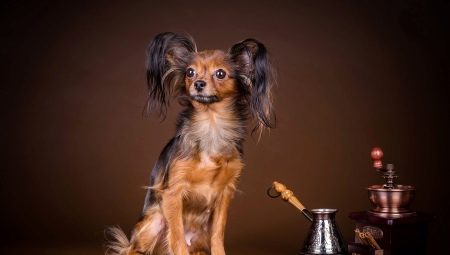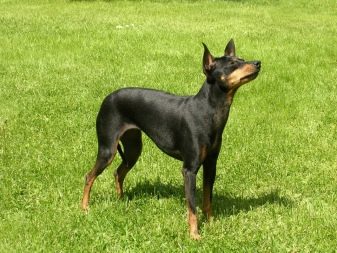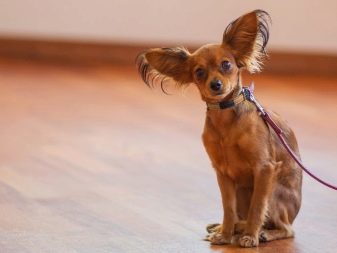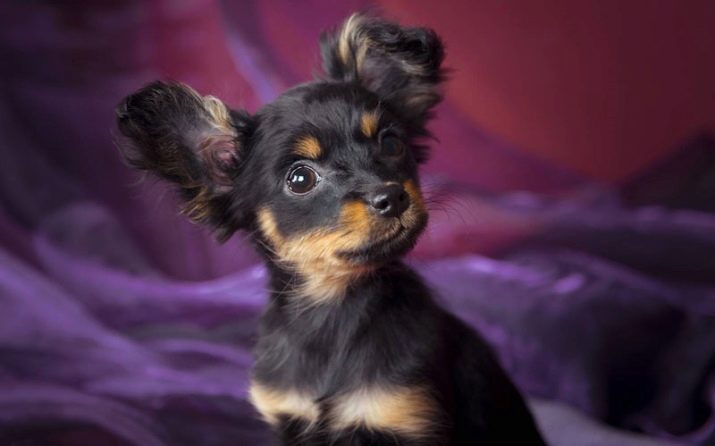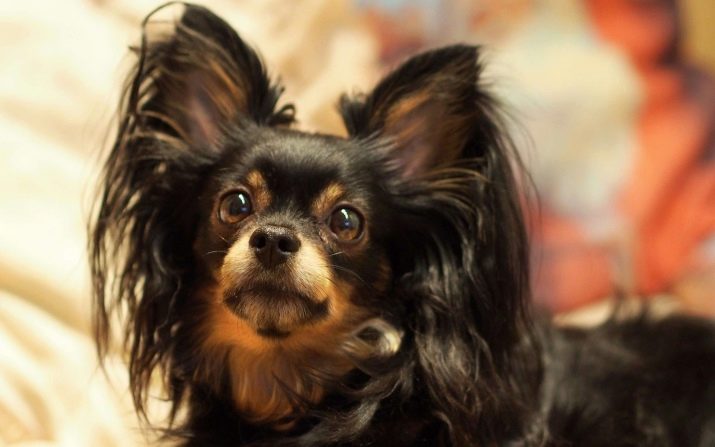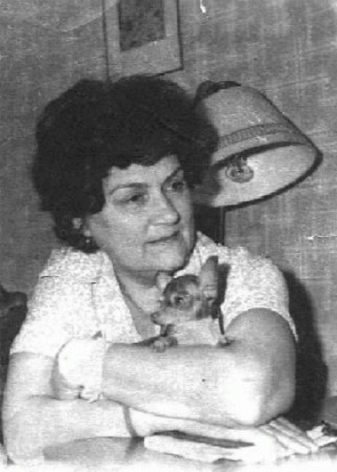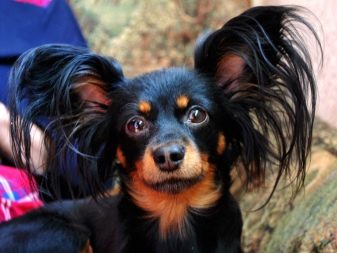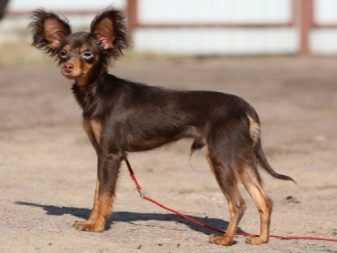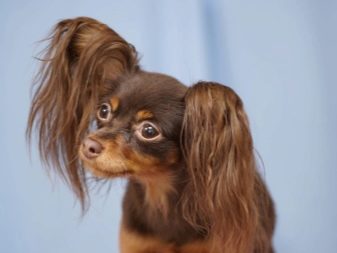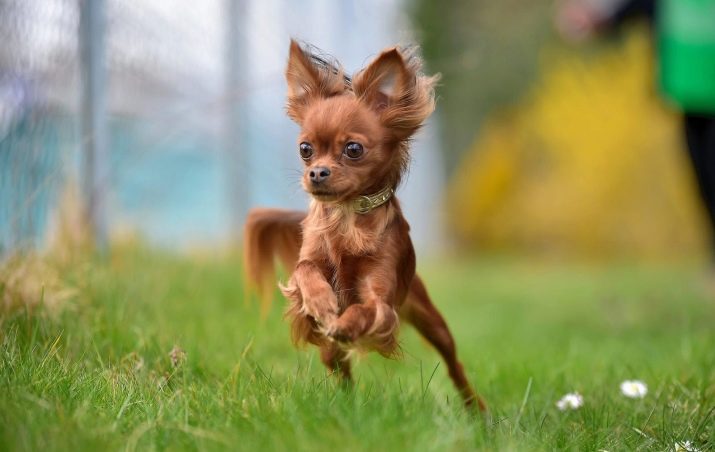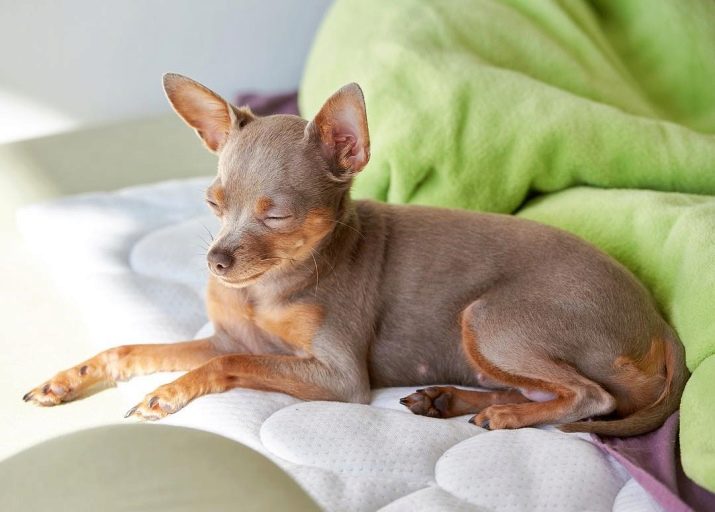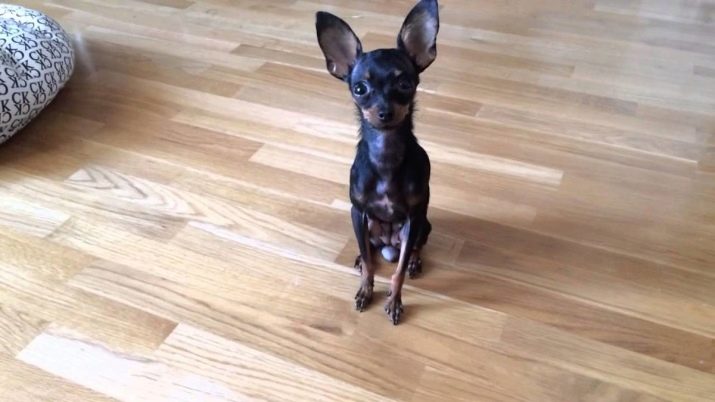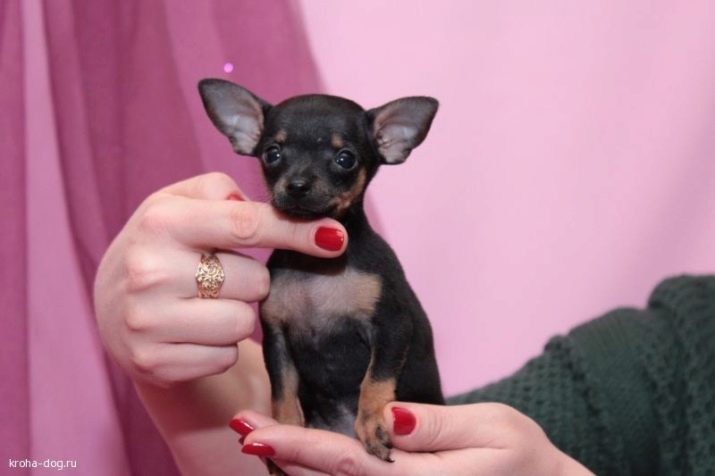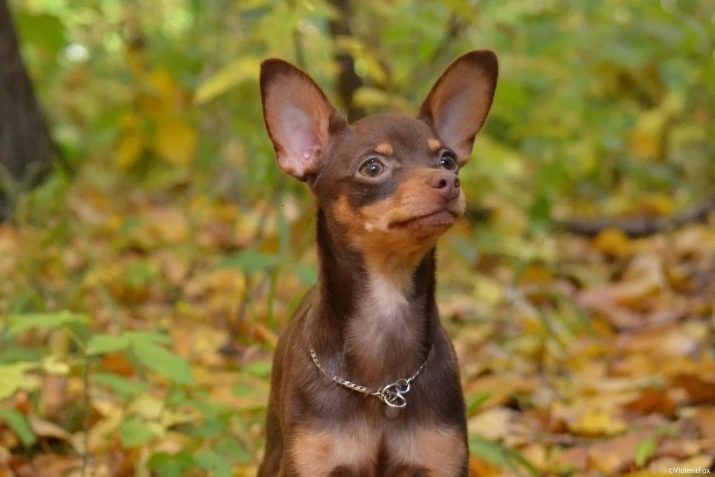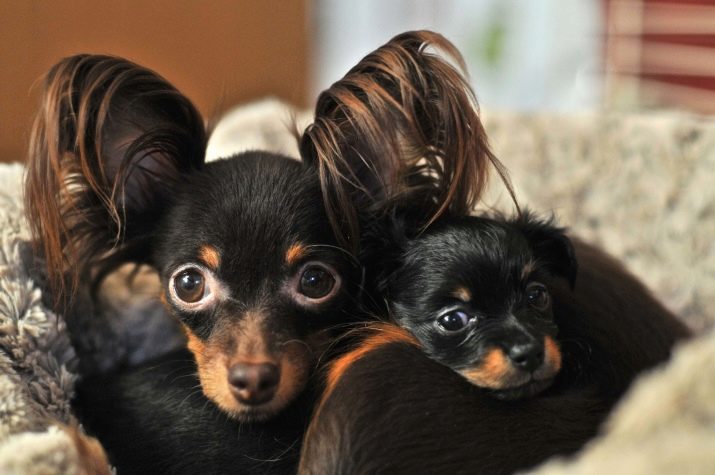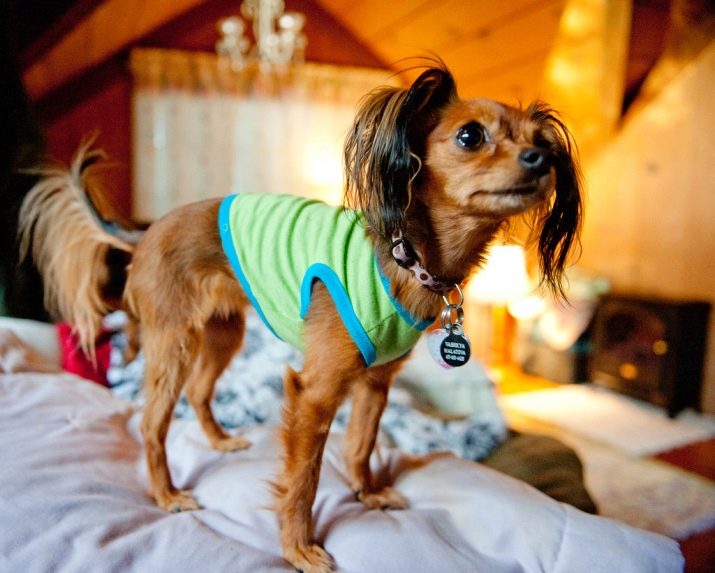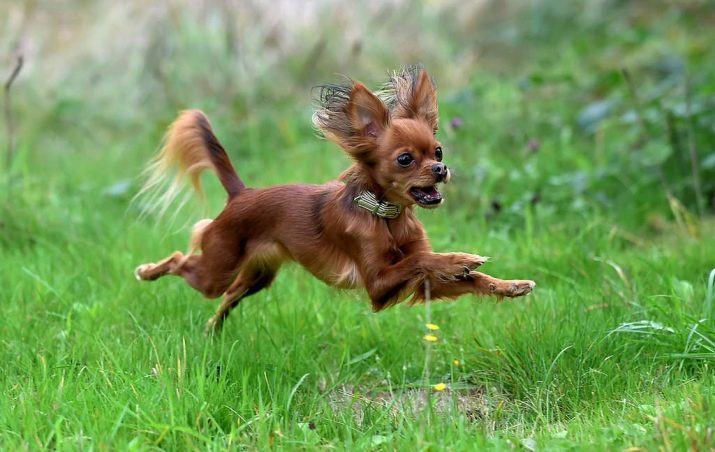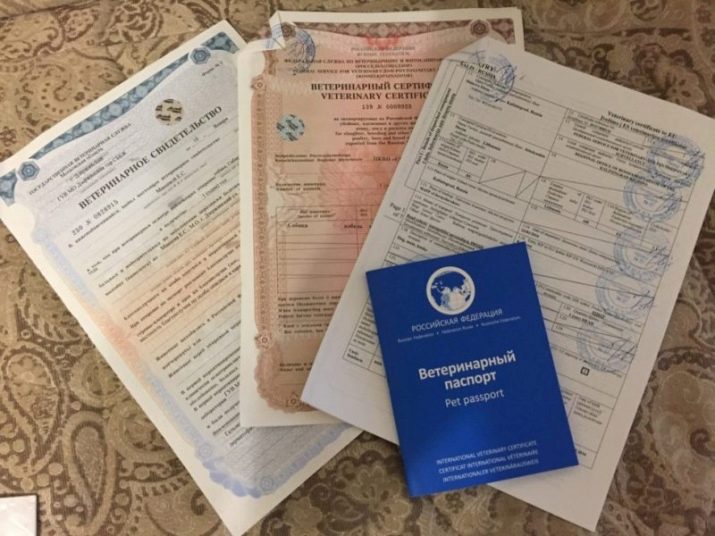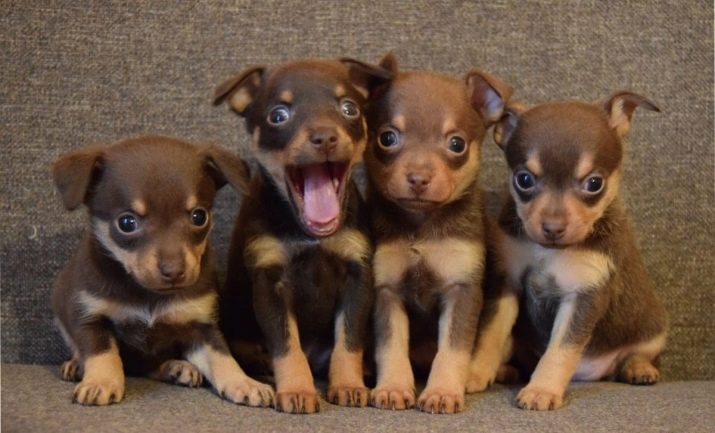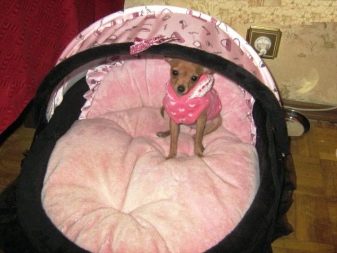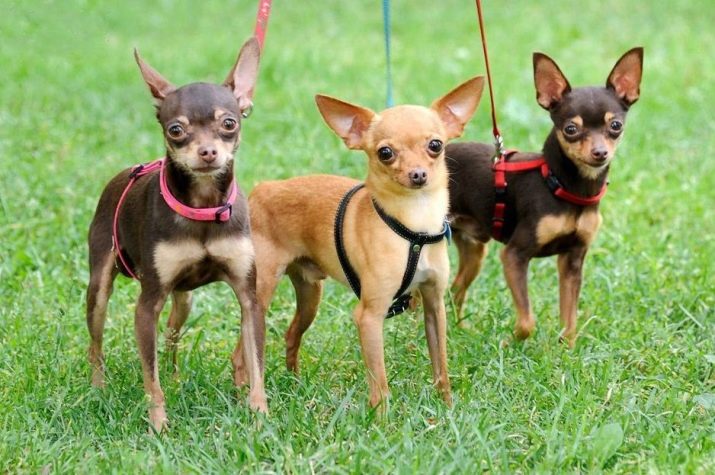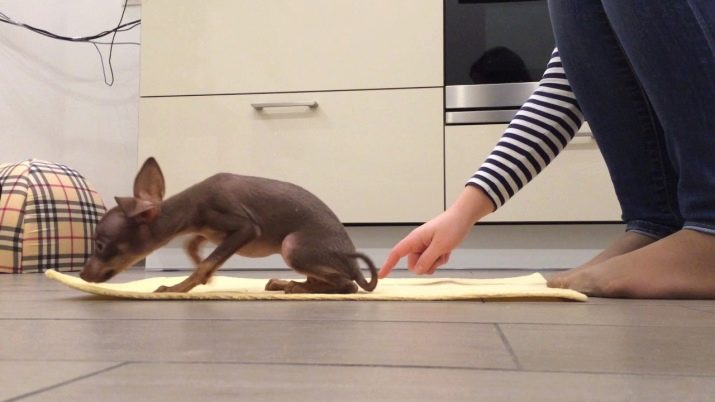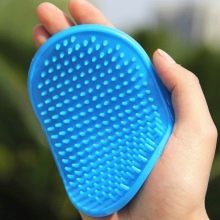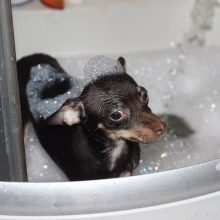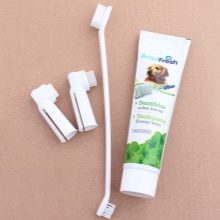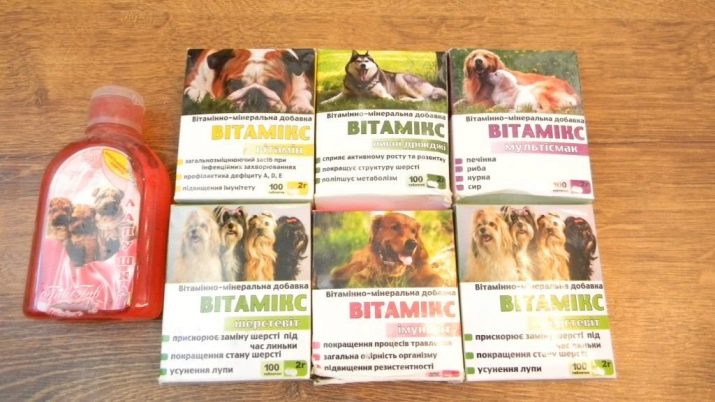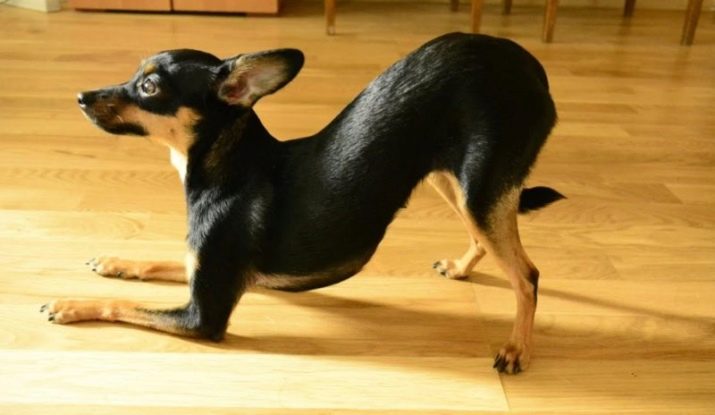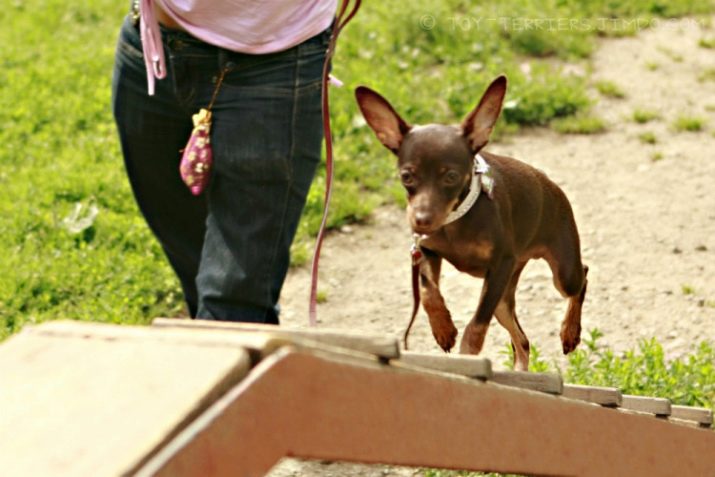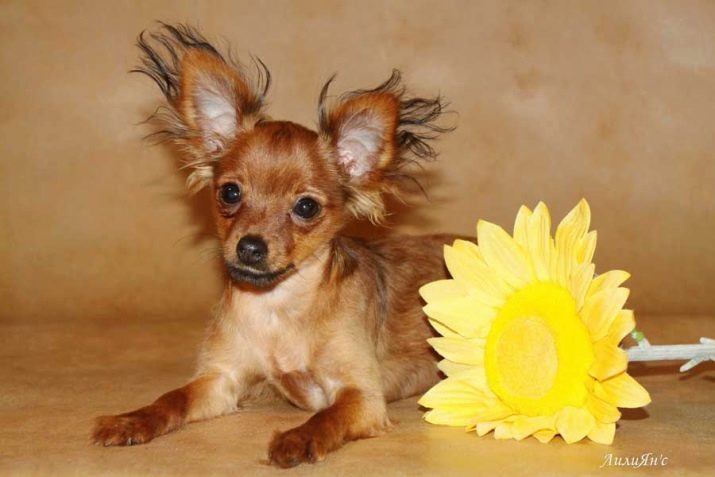Russian toy terrier is a miniature decorative breed of dogs, not losing its popularity over the years. Naughty and funny pets do an excellent job with the role of a soulful companion and loyal friend, and, if necessary, then a fearless defender.
History of origin
The story of the emergence of the Russian toy terrier is rooted in the 50s of the last century, when Russian breeders began to create a new decorative breed. English smooth-haired toy terriers were attracted as parents.who were considered to be excellent rat catchers in their homeland and brought to Tsarist Russia in the middle of the 19th century.
It was the descendants of these aristocratic dogs that were used for breeding work on the formation of a new breed.
The dogs liked the Russian nobility and soon became the personification of wealth and position in society. However, due to the events of 1917, the English toy terriers, like all bourgeois, lost their relevance and were sharply criticized by the Soviet system. Over time, the breed lost the purity of blood, and the dogs that were started 30 years later in breeding only remotely resembled their purebred ancestors.
As a result, the livestock received had little in common with the real English toy terriers, which, however, did not stop the enthusiasts at all.
During the crossing of selected individuals, extremely smooth-haired puppies were born.and only on October 12, 1958, the first long-haired baby was born from a pair of smooth-haired toy terriers Johnny and Dezi. Because of the non-standard woolen cover, the puppy was rejected and would have remained unknown to anyone if, by chance, it did not fall into the hands of the leading specialist of the Moscow Toy Terrier section Zharova EF. long-haired toy terriers.
An interesting fact is that long-haired representatives of the breed, which until 1966 generally belonged to the category of experimental breed group, received official recognition and registration much earlier than their smooth-haired “parents”. And at the end of 1966, Zharova was able to achieve the approval of a standard for her pets, the Moscow long-haired toy terriers. The complete formation of the Russian dogs of both types as an independent breed was completed in 1969, and by the end of the year more than 300 dogs with pedigree were registered.
If we take into account the youth of the breed and the infertility of litters, the figure is very impressive.
In the 60s and 70s of the last century, the cost of puppies of a Russian toy terrier was quite affordable. In this regard, pensioners often became owners of dogs who took the animal solely for the soul and were absolutely not interested in breeding. Moreover, after the fall of the Iron Curtain, representatives of other miniature rocks poured into Russia, and the Russian toy terrier was practically lost. The breed was already forced out by new-fashioned foreign competitors, so the owners of the remaining livestock stopped visiting the exhibitions.
However, in the late 80s, Zharova, together with other enthusiasts, began to revive Russian Toya. It was very difficult to do this, since the former thoroughbred livestock had grown old, and their descendants belonged to other clubs. But step by step, literally from a clean slate, the breed was still able to be restored, and already in 1996 the National Breed Club “Russian Toy Terrier” was opened in the capital. The following year, the club organized the First All-Russian Breed Exhibition, which aroused great interest of dog breeders and attracted close attention to the breed.
Official recognition of the FCI breed has received only 21.02.2006.when the meeting of the Tribal Commission approved the decision to assign the official standard No. 352 to it. At the request of the Federation, both varieties — the Moscow long-haired and the Russian smooth-haired toy-terriers — were combined into one breed and assigned to it the common name — the Russian toy-terrier. However, at first, the breed had the status of “temporarily recognized” and did not have the right to claim important international titles. Permanent permission was issued only in 2017, which allowed the Russian toies along with other breeds to qualify for world and European championship titles.
Breed description
Russian toy terrier, which is often called “toychik” in everyday life, is a small, elegant and very active dog. Adults are characterized by lean muscles, thin bones and poorly expressed sexual dimorphism, which is clearly visible only in the behavior of animals.
- The head of the toy is round, the transition between the muzzle and the prominent forehead is well expressed. Occipital lumps with supraorbital arches are weakly visible.
- The muzzle has a pointed shape with thin cheeks and in accordance with the standard is 1/3 of the length of the head. Small and very sharp teeth are closed in a regular scissor bite, jaws are light, with thin lips tightly fitting to them.
- Big round eyes are set far apart and, according to the standard, are always dark brown.
- Nose small, pigmented in color or black color.
- The erect ears are triangular in shape, set high, rather large in proportion to the head.
- The neck is long, gracefully curved, set very high.
- The chest is not very wide, has an oval shape and is somewhat deepened.
- Belly tucked up, pronounced underbelly absent.
- The back noticeably falls to the tail and is distinguished by a well-marked wither.
- The tail is usually cropped, however, natural length is also allowed.
- Legs are straight, thin and long. Paws are arched, oval, fingers tightly closed.
- The movements are free and very confident that in combination with miniature sizes it looks very harmonious.
As for wool, then There are two types of Russian toy terriers - sleek and long-haired. In dogs of the first type, the coat is short, fits tightly to the body and does not have an undercoat. The representatives of the second type of body are covered with straight or slightly wavy hair 3-5 cm long. Despite the sufficient length of hair, the natural contours of the body are not hidden. The hair on the head and the front of the legs is rather short, despite the fact that there are lines on the backs of the limbs. The paws are also covered with long hair, which completely hides the claws.
On the ears, the hair, too, is of sufficient length and its fringe hangs down like that of a Chinese crested.
The color of Russian toy terriers is black and tan, blue, purple, red (gold), with or without a black or brown patina. Disqualification features include white, black, and black-clad colors, as well as the presence of white spots, a large tan and size. In addition to non-standard color, a toy terrier can be rejected for a rare coat and bald spots for smooth-haired species, for too long or curly hair in a long-haired variety, and also if the puppy is lop-eared, short-legged or has an overbite.
However, the characteristics of the Russian toy terrier will be incomplete if the advantages and disadvantages of the breed are not considered. So, the advantages of these small and attractive dogs include mobility, energy, good nature, cheerful disposition, unobtrusiveness, obedience and lack of aggressiveness.
Moreover, they have a balanced character, are very sociable, intelligent and well trained.
Among the minuses can be noted excessive "talkativeness", which often causes fair indignation of neighbors on the porch, vulnerability to heat and cold, stubbornness, voracity and cockiness of males. Besides, these are very fragile and require careful handling, especially with regard to their relationship with children. Therefore, if there is a small child in the house, then it is better to look at some other, stronger breed and not to expose the puppy to danger from communication with the child.
Why is called dwarf?
The main difference between dwarf dogs from other small breeds is their height and weight. So, Males of the Russian toy terrier of both types grow only up to 28 cm, and bitches at all to 25. The weight of animals varies from 2 to 3 kg and depends on the sex and age of the pet. If the growth of an adult individual does not exceed 20 cm, and its weight is less than 1 kg 800 g, then such a dog is considered a mini-toy terrier, and “micro-puppies” are often found in litters of parents of standard sizes.
Small pets often act as hand dogs and are a kind of decoration and an indicator of the high social status of their owner. However, according to professional breeders, it is undesirable to use not only mini-dogs, but also dwarf dogs for such purposes. This is due to the genetically incorporated mobility and activity of the toy and their need for constant movement and games.
How old do dogs grow?
Russian toy terriers, including mini-toy terriers, actively grow up to 4-5 months. Upon reaching this age, accelerated growth ceases, and the animal gradually gains muscle mass. It should be noted that during the intensive physical development of the puppy, his brain activity is also actively developing. As a result, a 4-month-old baby is not inferior to an adult dog in mental development.
However, it should be noted here that these data are rather average, since not only genetics, but also housing conditions, diet and care influences puppy growth. Therefore, these points should be paid close attention and especially to monitor the presence of protein foods in the pet menu. In addition, excessive exercise, as well as a sedentary pastime, can harm the formation of bone tissue and lead to diseases of the musculoskeletal system.
The final formation of the skeleton and a set of muscle mass ends by 9-12 months.
Character traits
Russian toy terriers are overly playful and energetic dogs that get along well with other pets and people. but due to the labile psyche and exposure to stress, it is not recommended to take such animals to noisy places. For the same reason, the Russian toy should not be kept in a house where noisy and noisy children live, otherwise the dog will bark a lot and remain in a state of constant stress, which ultimately will have a negative impact on her mental health.
Also, due to the excessive activity of dogs, the breed should not be taken by older people, as a mischievous pet will require games and will not allow owners to fully relax.
In addition to activity and playfulness, a distinctive feature of this character is complete dependence and excessive attachment to its owner. There are cases when the toy terriers, unable to bear the separation from their owners, fell into a severe depression, fell ill and died. It is also impossible not to say about the courage and fearlessness of these small dogs.Often you can see situations where a small defender threateningly throws himself at huge dogs. However, this behavior is often completely unreasonable, and the belligerent one begins to bully over and without him.
In such cases, the owners should spend more time rearing the pet, since aggressive behavior can provoke the reaction of large dogs and lead to serious, and sometimes irreparable consequences.
With regard to the relationship to strangers, the Russian that behaves with them very wary and looks at the reaction of the owner. If he is calm and benevolently disposed towards a stranger, then the dog will behave with him in the same way. He quickly comes into contact with the guests who have come to the house, allows himself to be ironed and picked up. In adolescence, she is not averse to chewing on furniture legs and shoes, which is complicated by its miniature size and ability to penetrate the most inaccessible corners of the apartment. Therefore, in order to avoid material damage, the puppy's freedom of movement should be limited to one room, from which it would be desirable to remove all unnecessary.
Another characteristic feature of Toya is to maintain activity throughout life. Often, you can see a pet older years, tirelessly running for a stick or ball. In view of the hunting past of the direct ancestors - English toy-terriers, the dog is not averse to chasing the neighboring cats and birds. At such moments, the dog is so fond of the chase, that he does not see or hear his master.
These points must be taken into account and measures must be taken to ensure that the dog does not run away too far and is not lost.
It should also be noted the high protective and protective qualities of the toy, however, the miniature size does not allow them to be realized fully. So, at the sight of danger, with that breast rises to the defense of the owner and fearlessly rushes at the offender. From the outside, such a sight looks very funny, however, the dog’s desire to save the master is so sincere that the offenders sometimes do not withstand his pressure and retire.
How to choose a puppy?
It is better to buy a puppy of a Russian toy terrier in the nursery or from reputable breeders, since buying “from hands” cannot guarantee full compliance of the pet with the breed qualities. Such toi often have behavioral anomalies that manifest themselves in excessive cowardice or, conversely, in unjustified aggressiveness. Besides, When buying a toy terrier in a pedigree nursery, you can always get acquainted with the puppy's parents, see the history of their diseases and watch their behavior.. Another advantage of such a purchase will be the presence of a puppy card and a veterinary passport with marks about calendar vaccinations.
As for the age of the baby, then It is not recommended to buy puppies that have not yet turned 2 months, and the best option would be to buy a 3-4-month-old pet. At this age, deviations in the exterior are already clearly visible, so the risk of running into a “fake” is much less. It is also recommended to choose a puppy in a mono-pedigree kennel, as in a multi-breed there is a chance to get a culling.
Regarding the cost of toy terriers, we can say the following: the price for a puppy of a pet-class starts at 20,000 rubles, a brid-class starts at 30,000 rubles, and a show class starts at 40,000 rubles (2019 data). It should be borne in mind that puppies from unplanned matings that do not have documents are 70-80% cheaper than dogs with documents, and owners of elite genes with parents-medalists, on the contrary, are 20% more expensive than the average cost. The color of the little one also affects the final cost: Chocolate and blue puppies are much more expensive than kids of black color.
The same with sizes: you will have to pay much more for a mini-toy than for a standard-sized puppy.
Maintenance and care
The Russian toy terrier is exclusively a domestic dog and must live in warmth and comfort.When buying a puppy, you need to take care of his bed and pre-purchase him a soft and comfortable bed with low sides. Have a puppy "for the night" should be away from heating appliances and drafts. It is advisable to place the pet in a secluded place where he can rest easy and at the same time will not interfere with family members walking around the apartment. Small puppies need to be provided with toys with which they will spend long hours waiting for a walk. Toi love their toys very much and even when they are older they play with pleasure with them.
In order that the player does not dangle with the household under his feet, he can fence a small area and cover it with artificial grass.
Russian that needs active walks, so special attention should be paid to physical exertion. Moving into a lifestyle can help prevent obesity, which most toy people are prone to, and will allow your pet to splash out the energy accumulated during the day. Dogs love to run around without a leash, however, they can only be released in case of a firm confidence in their friendliness. If a dog is constantly bullied on dogs, it is not recommended to detach it from a leash in public places. When going for a walk in cool weather, they should wear clothes, as dogs do not tolerate cold and catch cold quickly.
During the walk it is necessary to ensure that the toy terrier does not drag anything from the ground into the mouth, since many babies have this habit. In such cases, well trained pet training, and in extreme cases - a muzzle. It is very important not to allow this to jump from a height and overcome various obstacles: The dog has very fragile bones and may be injured in any careless movement. As soon as the puppy appears in the house, he should immediately be taught to relieve himself in absorbent diapers or in a tray. In the future, this habit will eliminate the need for walks in cold weather and will help maintain order in the apartment.
As for the care of the Russian toyoma, it is quite simple and includes several mandatory procedures.
- The short-haired toies are rubbed weekly with a rubber mitten, while the long-haired ones are scratched every day.
- It is recommended to bathe shaggy dogs every 2 weeks, shorthair - once a month.
- To cut the claws should be as they grow, about once every 2 months. It’s not worth hoping that the dog will chase them themselves: they have very little weight, so even walking on the asphalt does not solve the problem.
- Ears should be covered with cotton while bathing and wiped with an antiseptic solution once a month. In long-haired individuals, it is necessary to monitor the state of the hair in the ears, and when it grows strong, carefully trim it. In addition, the ears should be inspected daily for infection, and even with minor secretions immediately show the animal to the veterinarian.
- The eyes of the toy terrier also need daily inspection and removal of dried discharge.
- It is recommended to brush your teeth once a week using dog paste and a miniature brush.
- If the animal does not take part in reproduction, then it is possible to castrate or sterilize the pet. This procedure is performed at the request of the owner or for medical reasons at 6-12 months in males, and in females - before the first estrus, but not earlier than 5 months of age.
With proper care and optimal conditions of detention, the Russian Toy Terriers practically do not get sick and easily live to 15 years.
Feeding
You can feed the Russian tomatoes with both natural food and ready-made food. The latter method of feeding is considered the most preferred option, since it does not require the preparation of a balanced menu and the additional use of vitamin-mineral complexes. All components in the feed are selected taking into account their compatibility and in the quantities necessary for the pet.
Experts recommend choosing premium quality food for small dogs of decorative breeds.
If it’s decided to feed them with natural products, then the menu should be developed taking into account that 40% of the total portion of the portion should be lean meat (beef or chicken) or by-products. The remaining 60% should fall on cereals (40%) and vegetables (20%). A couple of times a week you also need to offer low-fat kefir, ryazhenka and cottage cheese, as well as boiled sea fish with selected bones, seasonal fruit and egg yolk. In addition, when a natural way of feeding the animal should be given an additional vitamin and mineral supplements. With any method of feeding you must have free access to reading drinking water.
Forbidden foods, which under no circumstances can not be fed Russian toya, include sweets, fatty, spicy and fried foods, as well as pickles and baked pastries. As for the number of feedings, puppies up to 3 months are fed 5-6 times a day, by 4 months they are transferred to 4 meals a day, by 6 months - 3 meals a day, by a year - 2 meals a day. In any case, it is impossible to overfeed as this, because the breed has a high susceptibility to obesity. In this regard, you should not lure the dog off the table and leave food in accessible places. Thus, puppies for 1-3 months are given 50-70 g of liquid milk porridge, for babies 3-6 months - 100-150 g are still liquid food, and from 6 to 12 months - 250-300 g of solid food. For those over one year old, the weight of the serving should not exceed 500 g.
Upbringing and training
The Russian toy terrier is a very intelligent and intelligent dog and can be trained well. Pets perfectly understand the meaning of many words, so there are no problems with the execution of commands. Even beginners who have no such experience can train a little toya. The only condition for raising a dog is regularity and sequence of training. This requirement is due to the fact that inexperienced owners are often confused by the fragile physique and charming appearance of the pet, because of what they instead of as early as possible to start upbringing, begin to indulge the dog too much.
As a result, she quickly feels permissiveness and impunity and literally sits on the neck of her master. The dog begins, in the literal sense of the word, to roll up tantrums and does not calm down until it receives the desired. Such pets often carry food off the table, bark loudly, demanding snacks, show aggression and sleep wherever they like, including in the owner's bed.
Soon the owner realizes that he has made a gross omission in his upbringing, but it turns out already too late.
Spoiled and hamovitny dog is not going to be corrected at all and over the years it becomes only more stubborn and capricious. Therefore, you should not go on about these cute dogs, and from the first minutes of the appearance of the baby in the house, you should immediately begin to bring him up. The training of Russian toya is conducted according to the classical scheme, using a system of rewards and punishments. A strict voice and shout should be used as a censure. In no case can you beat and kick a pet.
The general course of dog training is not necessary, but the dog must know the basic commands. You need to start training in 3 months, that is, immediately, as soon as the animal gets used to its name and owner. In addition, it is necessary to socialize toya as soon as possible, especially with regard to excessively snooty males.
To do this, you need to walk with your baby more often in crowded places and allow him to play with other puppies.
Owner reviews
The owners speak very positively of their pets and love them dearly. All as one note the good mental abilities of dogs and the presence of high intelligence. Toy terriers often understand their owners literally at a glance and try to please and earn in every way praise. However, only exemplary dogs behave this way, whose owners took care of their upbringing in time.
But complaints about the behavior of the toy are also not uncommon. On various "dog" forums there are often reviews about the pranks and self-will of small pets. There is a bad habit of dogs to come to the owner in bed and strongly obstinate when trying to send a dog to the place. Many complain about the loud and often unreasonable barking of little toi, which causes great inconvenience at birth in the family of the child. However, positive feedback about dogs is much more. The hosts simply adore their loyal and reliable friends and will not exchange Russian toya for any other breed.
About this breed of dogs, see the following video.
